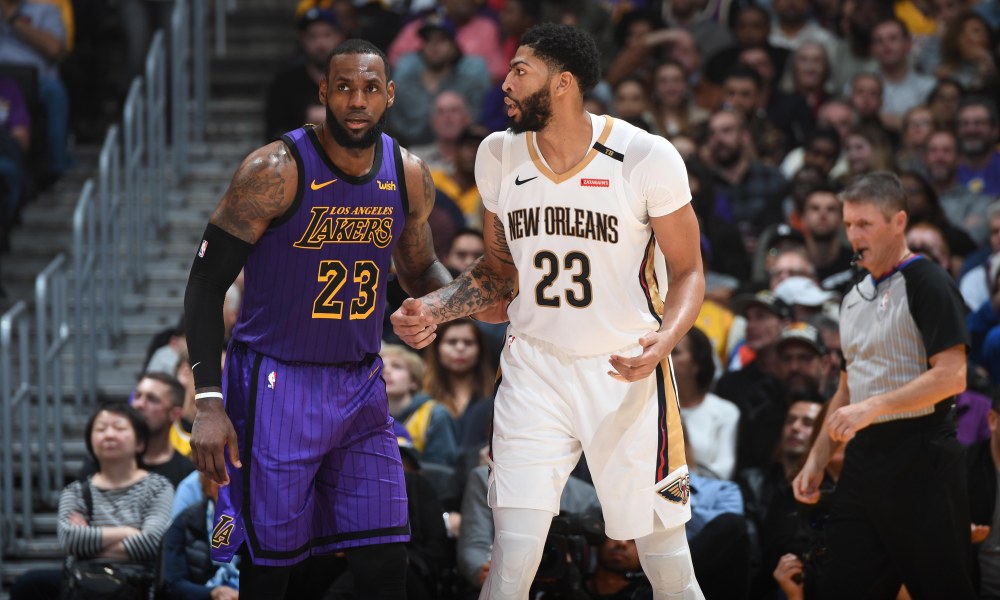At its core, professional sports are predicated on motion and kinetic energy. During game action, fans are conditioned to keep their eyes on the ball’s kinetic energy and ignore what’s occurring away from the action. Flawlessly orchestrated screens and weakside player motion are the gears that ultimately produce resplendent offensive highlights. Yet, in a profession where torn tendons, muscles and broken bones can alter a game, series, franchise, the metaphorical latent energy being stored by perspicacious franchises in the form of draft assets and investment in talent development can result in surprising outcomes that alter the league’s trajectory.
This effect is magnified in the NBA where individual players have a more direct impact on single seasons. This is why the complaints about the Golden State Warriors’ acquisition of Kevin Durant ruining the competitive balance during the summer of 2016 rang so hollow. The balance of power never remains static for long. Newton’s First Law states that an object will remain at rest or in motion in a straight line unless acted upon by an external force. The NBA’s nonlinear path is unpredictable and variables are always building momentum beneath the surface.
The Houston Rockets are a prime example of The Association’s latent energy creating an incremental butterfly effect. During the summer of 2012, few expected James Harden to morph into one of the great offensive playmakers of our generation, especially after his lackluster NBA Finals appearance. Harden’s evolution put the Rockets on the path to perennial Western Conference bridesmaids. Two summers ago, the Houston Rockets were stuck in a neutral position until Daryl Morey mortgaged the future on a 32-year-old Chris Paul.
This month, the Rockets were allegedly attempting to jettison Paul, Clint Capela and Mike D’Antoni in a top-down deconstruction after tripping themselves up in the Conference Semifinals. After Durant ruptured his Achilles and Klay Thompson tore his ACL, those Rockets may have scaled the Western Conference hierarchy, D’Antoni was given an extension. The rumors that Paul was available for a potential trade were squashed, then briefly revived from the Pet Cemetery and then re-buried.
Yet, the vast majority of the NBA’s superficial fanbase remain committed to the false impression that the league is a deterministic system. At times, the tectonic shift happens quickly. However, much of the time we are frogs in the NBA’s boiling pot; oblivious to the changing climate around us.
Giannis Antetokounmpo transformed from Greek Bruce Banner into The Incredible Hulk. A few years prior, the Indiana Pacers thrust a pair of thorns into the Heatles sides by drafting Kawhi Leonard before subsequently shipping him to the San Antonio Spurs.
In 2016, Golden State hollowed out their bench, failed to restock the rotation through the draft and traded a really good player in Harrison Barnes to make room for an otherworldly talent. For nearly three years it produced favorable results. They avoided catastrophic injuries to Steph Curry during the 2016 postseason, Zaza Pachulia nearly ended Durant’s first title run with Golden State after falling on the former MVP’s left leg, bruising his leg and resulting in a Grade 2 sprain of his MCL. A year after that close call, Houston nearly uprooted Golden State in the Conference Finals. What was bubbling underneath the surface were the cumulative wear-and-tear effects of 105 additional playoff games and 10 fewer months of offseason which exposed their shallow bench.
Barely 48 hours after the culmination of a manic Finals that shifted narratives after each final buzzer sounded, the league was shaken up once again by the New Orleans Pelicans trading Anthony Davis to the Los Angeles Lakers for (inhales) Brandon Ingram, Lonzo Ball, Josh Hart, this 4th overall selection, a top-eight protected pick in 2021 (which becomes unprotected in 2022 if it does not convey), the right to swap first-round picks with the Lakers in 2023, and an unprotected 2024 first-round pick that New Orleans can defer to 2025 (gasps for breath), ending one of the most contentious pre-agency sagas in recent memory.
Davis’ acquisition immediately vaults the Lakers into Western Conference contention mere weeks after they were the poster child for front office disarray and roster mismanagement.
The only thing worse than being stuck as an NBA lottery bottomfeeder is inertia. These hopeless straits are what teams like the Cavaliers, Wizards, Hornets, Pistons, Timberwolves and the Magic currently experience. They’ve been relegated to the middle of the lottery, are nearly capped out which locks them out of the max player market or aren’t alluring enough to be active max free agency players and have an asset shortage which prevents them from cajoling a cornerstone player out of a potential trade partner down the line.
A few weeks ago, the Pelicans’ wheels were also spinning in place. Winning the lottery gave them a jolt and the windfall they’re receiving in the Davis trade will solar power their ascension for the foreseeable future. There will be potholes on the road, but they have now stockpiled enough assets and talent to flesh out a robust supporting cast.
The Lakers most important this upcoming season will revolve around LeBron James’ physical well-being. Anthony Davis has a history of minor injuries, annoying bumps and bruises, but James will be turning 35 this December. While he’s avoided major injuries for the majority of his career, the groin injury that forced him to miss 17 games last season could be a harbinger and at the moment, the Lakers bench is a smoldering King’s Landing after Daenerys Targaryen’s siege.
James’ moderate athletic decline has been tempered by his prodigious basketball IQ, size and strength. However, at some point his muscles and tendons will wither under the strain of nearly two decades, 1,437 games and 56,284 minutes of professional basketball.
Meanwhile, the Pelicans are also undergoing a change in state. The thermodynamic energy emanating from their potential is palpable. Best case scenario, the Pelicans could wind up as the contemporary to the erstwhile Durant-Harden-Westbrook-Ibaka Thunder. If this change of scenery catalyzes Brandon Ingram’s evolution into a facsimile of Paul George, the Davis trade could be a major boon for New Orleans, regardless of how Lonzo Ball turns out or what their draft picks turn into. On the other hand, he could plateau as 2019’s Elmore Smith analog. Smith, a former 3rd overall pick of the Buffalo Braves, was traded to the Lakers after his first season. Smith averaged double-doubles in each of his first four seasons, led the league in blocks during the first season it was recorded statistic, still holds the single-game record for shots blocked and was a nice, young fringe All-Star for a Lakers squad that won 47 games.
After he was included in a package that sent him to Milwaukee for the imitable Kareem Abdul-Jabbar, Smith faded into obscurity, reached his ceiling too soon and was hindered by knee injuries. Ingram’s shoulder clots have been a concern since they were detected in early March, but it’s the progression of his outside shooting that will help him become more than just another NBA trade trivia footnote.
There’s also no guarantee that Zion, Ingram, Ball and whomever they select with the 4th pick will remain together, even if they pan out. Teams tinker and upgrade until the on-court formula is perfected. Change is constant. The Pelicans and Lakers have shifted the narratives around their respective franchises, but there are still more aspirational moves to be made by both franchises, beginning with Thursday’s NBA Draft and free agency.



